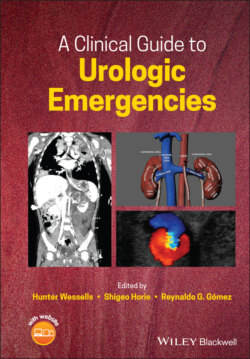Читать книгу A Clinical Guide to Urologic Emergencies - Группа авторов - Страница 23
Management of Renal Trauma in Children
ОглавлениеMany studies have evaluated management of renal trauma in children, with the consensus being that most cases of pediatric renal trauma can be safely managed non‐operatively [63–67]. Rates of delayed intervention vary from very low to as high as 30–40% [64,68–70]. In one series of 16 patients managed non‐operatively, 44% required intervention with a mean time to intervention of 11 days; collecting system clot and larger urinoma were significant predictors of failure of non‐operative management [70]. Consistent with findings in adults, another group found that medial contrast extravasation among grade IV renal injuries was a significant predictor of failure of non‐operative management [71].
Given the lack of age specific guidelines, pediatric blunt renal trauma guidelines were established recently by the Eastern Association for Surgery of Trauma and Pediatric Trauma society [72]. These guidelines advocate for nonoperative management in high‐grade trauma sustained by hemodynamically stable patients based on synthesis of evidence. For those undergoing intervention, angioembolization is highly recommended. Finally, routine blood pressure monitoring is recommended after injury.
